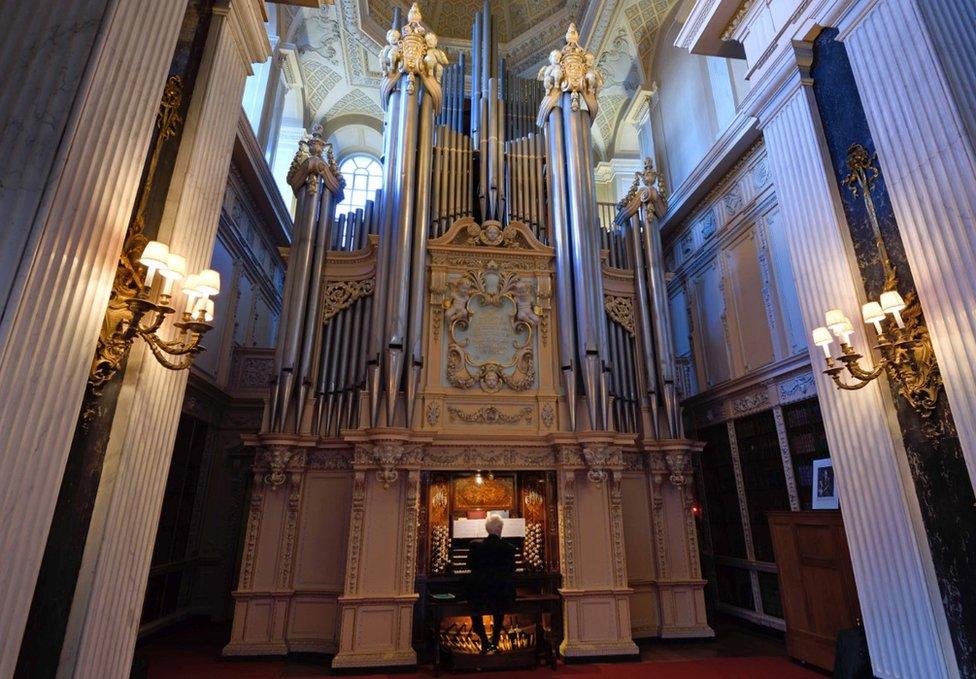Blenheim Palace recitals to fund 'worn out' giant organ
- Published

The deteriorating organ is the largest in a private house in Europe
The restoration of a giant 125-year-old organ at Blenheim Palace is to be funded through a series of concerts.
More than £400,000 is needed towards repairing the instrument, which is the largest in a private house in Europe.
It has 2,300 pipes and 52 speaking stops, but several no longer work, while broken pistons mean there are several missing notes.
It is now being played in twice-weekly recitals to raise money through donations.
It was built in 1891 by "Father" Henry Willis and took two and a half years to transport in sections to the estate in Woodstock, Oxfordshire from Camden in London.
'Great battleship'
A spokeswoman said during its illustrious history it had "entertained kings, emperors and wounded World War One soldiers".
She added: "The Prince of Wales (later Edward VII) visited for a week, and greatly enjoyed the organ, particularly Wagner opera transcriptions.
"Three years later, the German Emperor visited Blenheim with His Royal Highness the Prince of Wales, and listened to a recital of Wagner and Handel.
"He likened playing the organ to 'steering a great battleship', and was so taken by the organist that he invited the latter to play in Berlin, an invitation that was later accepted.
"During the First World War the Long Library served as a convalescent hospital, and the organ was much used for the entertainment of the troops."
The organ was commissioned by the 8th Duke of Marlborough George Charles Spencer-Churchill - who was Winston Churchill's uncle - and his wife Lillian. He died a year after its installation.
The inscription above it reads: "We leave thy voice to speak within these walls in years to come when ours are still."